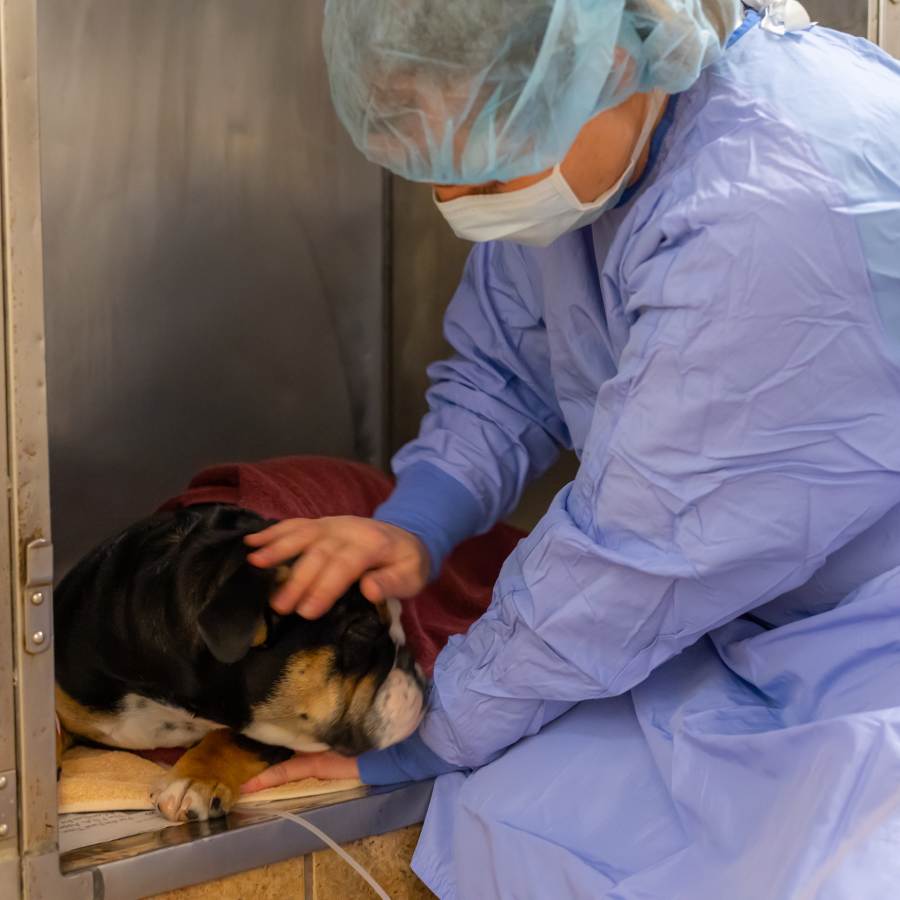Pet Femoral Head Osteotomy (FHO) in Kingston, NH
The hip joint is a ball and socket joint. The ball component of the joint is called the femoral head, and the socket component is called the acetabulum.
Pet Femoral Head Osteotomy (FHO)
A femoral head osteotomy (FHO) is a surgical procedure that involves removing the femoral head. This procedure is indicated when hip joint disease results in chronic pain and other treatment methods are not feasible or did not produce the desired results. Chronic DJD (arthritis) secondary to hip dysplasia or trauma can result in continual pain, which may require a femoral head osteotomy for relief and a return to function.
Diagnosis
Diagnosis of conditions that may indicate an FHO procedure involves an extensive physical examination. X-rays are taken under general anesthesia, so the patient’s hip joints may be evaluated and/or manipulated without pain to provide the area’s best radiographic views.
Treatment
An FHO procedure is a very involved orthopedic surgery. The patient will spend several hours under general anesthesia while the femoral head is removed, relieving pressure from the joint. The patient will eventually form what is called a pseudoarthrosis, which is a fibrous joint consisting of scar tissue.
Post-Operative Recovery
All FHO patients will need to spend a minimum of 1-2 days in the hospital following the procedure. This is so pain and discomfort can be controlled using injectable and transdermal medications and to restrict and monitor movement by the patient during this most critical period of recovery.
The degree of limb use following surgery varies greatly between patients, from a full return to normal use to a permanent limp. Even with a limp, the patient’s pain will have lessened through the relief of pressure on the joint.
Once home, owners should do everything possible to limit their dog’s activity, as strict rest is required for proper healing. Initially, there should be no running, jumping, or playing, as these can all lead to re-injury.
Activity should be increased gradually, with short, slow, leashed walks beginning around weeks 8-10 of recovery. Observation of the patient is absolutely crucial during this period in order to gauge the speed of recovery. Some dogs feel ready to run around and play within the first few weeks; they are not! A full return to normal activity is often allowed within 12-16 weeks, depending on the severity of the patient’s initial injury, age, breed, and overall health. As a rule of thumb, the larger the dog, the longer the recovery time, with some patients taking as long as 6 months to recover.

